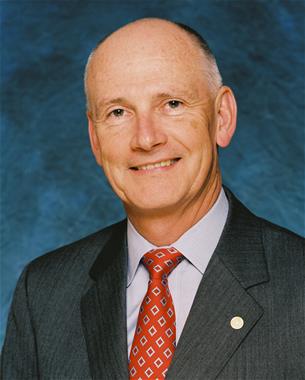
When the next president moves into 1600 Pennsylvania Avenue, a host of big challenges will be waiting: ensuring good jobs, public safety, quality education, good health care, a clean environment, and a basic infrastructure that supports economic growth and a high quality of life. A quick look at the water crisis in Flint, Michigan, provides just one inescapable signal about how important these challenges are.
At the bottom of all of these issues are three big realities. First, on anything that really matters to Americans, no level of government can escape responsibility. Second, the government has no “infrastructure” of its own to lead, manage, and support the collaboration we need. Third, the new president cannot hope to escape the political realities of failing to act or the administrative necessity of responding well. In the difficult days following Hurricane Katrina’s assault on the Gulf Coast, President George W. Bush learned these lessons all too painfully. His administration never recovered from the sense that government was too slow and too clumsy to respond.
One senior official in the Office of Management and Budget once said, “Everyone says how important collaboration is.” He added, “Critics ask, ‘Why don’t you just do it?’” Several important steps could help the federal government do it—and do it much better. The new president ought to:
- Transform the White House Office of Intergovernmental Affairs into a top-level center for collaborative government. Too often in the past, the office focused on state and local governments as interest groups to be managed instead of partners to be engaged.
- Create with the Domestic Policy Council a new advisory panel, composed of representatives from the private and nonprofit sectors and from state and local governments. The group should bring the perspectives of those outside the federal government on the decisions that would prove most effective—and the steps most important to ensure effective implementation. It would be far better to plan in advance than, as is so often the case now, run afterwards to catch up to problems that didn’t have to happen.
- Create a multi-agency workgroup within the Office of Management and Budget, as part of the Deputy Director of Management’s portfolio, to bring front-line operational debate to the top levels of the federal government’s management strategy.
- Develop a career track within the Senior Executive Service that focuses specifically on cross-sector, intergovernmental, multi-program skills. Members of this SES track should rotate across domestic agencies and through state, local, and nonprofit partners to gain a keen sense of the operational questions. This would reduce the tunnel vision that too often afflicts top-level government management.
These steps would not only signal a fresh approach for the new administration’s collaboration strategy. They would also help sidestep at least some of the problems that inevitably will arise when the weakness of the federal government’s collaboration infrastructure rears its head in an inevitable crisis.
New, Reduced Membership Dues
A new, reduced dues rate is available for CAOs/ACAOs, along with additional discounts for those in smaller communities, has been implemented. Learn more and be sure to join or renew today!
